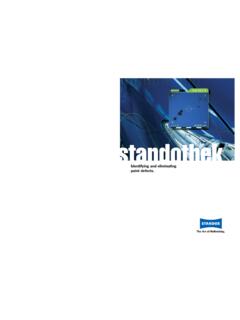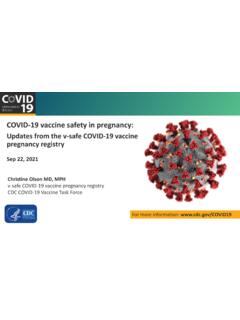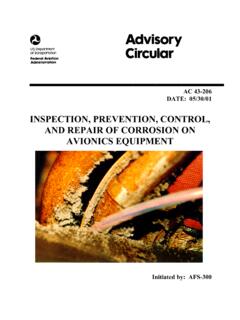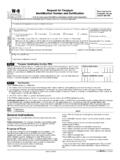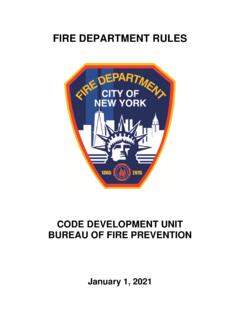Transcription of CDC’s Disaster Planning Goal: Protect Vulnerable Older …
1 MEDIA CONTACT CDC Healthy Aging Program Health Benefits ABCs William F. Benson CDC s Disaster Planning Goal: Protect Vulnerable Older Adults In Louisiana during Hurricane Katrina, roughly 71 percent of the victims were Older than 60 and 47 percent were over the age of 75. There is truly a need to plan and accommodate all Americans during emergencies, particularly Older Americans. Christopher Hansen, AARP Group Executive Officer Disasters of all kinds affect Older adults disproportionately, especially those with chronic diseases, disabilities or conditions that require extra assistance to leave an unsafe area and recover from an event. For this reason, emergency managers need to recognize that the frail elderly are a special-needs population and develop strategies to meet their needs.
2 The term frail elderly refers to Older adults who have serious, chronic health problems that could make them more Vulnerable during disasters [Fernandez, 2002]. Disasters come in many forms, including severe weather-related events, earthquakes, large-scale attacks on civilian populations, technological catastrophes, and influenza pandemics. Although the September 11, 2001 terrorist attacks focused some attention on Vulnerable populations and evacuations of people with disabilities, it was the destruction of Gulf Coast areas by Hurricanes Katrina and Rita in 2005 that marked a major shift in the way Disaster preparedness planners approach their job. 9/11 got the attention of the disability community, caregivers, and service providers, but it really didn t penetrate the emergency response community that much.
3 That came with Katrina, explained Vincent Campbell, PhD, Associate Director for Science in the Division of Human Development and Disability in CDC s National center on Birth defects and Developmental Disabilities. Older adults are definitely a population with needs that must be addressed, he added. In New Orleans, people aged 60 and Older comprised 15 percent of the population prior to Hurricane Katrina. However, more than 70 percent of those who died as a result of the hurricane were elderly, according to Grantmakers in Aging, which has been active in the hurricane relief effort. Many of the 200 people who died as a result of the hurricane in Mississippi were also Older adults. More alarming, data from the Louisiana Department of Health show that almost 70 nursing home residents died in their facilities.
4 Many were allegedly abandoned by their caretakers. Almost no information is available on what happened to residents of assisted living, board and care homes, and other less-regulated facilities. Another story, still largely untold, is that of Older adults with chronic illnesses, such as diabetes or breathing disorders, who suffered following the hurricane because they were unable to take their medications or lacked access to the technologies that help them function independently. Since the 2005 hurricanes, emergency response experts have placed a new focus on Disaster preparedness and response to better Protect Vulnerable populations, including Older adults, from harm. Numerous tools and strategies are available to help communities accomplish this, including advance Planning and training, working in coalitions, ensuring that advocates for Older adults participate in emergency Planning , and using community-mapping data to identify areas where many Older adults live.
5 CHRONIC disease AND DISASTERS Advancing age is a very powerful risk factor for having multiple chronic conditions, explained George Mensah, MD, Chief Medical Officer, National center for Chronic disease prevention and Health Promotion, centers for disease control and prevention (CDC). Currently, about 80 percent of Older adults have at least one chronic condition such as heart disease , cancer, diabetes, or stroke, and 50 percent have at least two. According to CDC s National center for Health Statistics, almost 50 percent of Older adults (aged 65 and over) have hypertension, 36 percent have arthritis, 20 percent have coronary heart disease , 20 percent have cancer, 15 percent have diabetes, and 9 percent have had a stroke [CDC-NCHS, 2004].
6 These conditions can lead to disabilities. For example, 3 million Older adults indicate that they cannot perform basic activities of daily living such as bathing, shopping, dressing, and eating. Traditionally, after any major Disaster , the public health sector focuses on safe water, sewage disposal, and food safety, but rarely do people seriously think about the impact of chronic conditions and the medication and devices that people need on a daily basis, said Dr. Mensah. We have to be prepared for chronic illnesses, too. Following a Disaster , chronic illness can easily worsen due to lack of food and water, extreme heat or cold, stress and exposure to infection [Bierman, 2001; Fernandez, 2002; Menotti, 2001; Mudur, 2005].
7 Following Hurricane Katrina, more than 200,000 people with chronic medical conditions, who were displaced by the storm or isolated by the flooding, had no access to their usual medications and usual sources of care [White House, 2006]. Even those who brought the recommended three-day supply of medications to a shelter ran out of pills. If people who are evacuated do not have the medications that have kept their diabetes stable or their breathing problem stable, in three days some of them could have exacerbations that require emergency management. That is the basic message we are trying to convey, Dr. Mensah said. In September 2005, the Kaiser Family Foundation conducted a survey involving 680 Katrina evacuees in Houston shelters.
8 The survey found that 41 percent reported having chronic health conditions 2such as heart disease , hypertension, diabetes, and asthma; 43 percent said they were supposed to be taking prescription medications; and 29 percent of those who were supposed to take prescription medications reported problems getting prescriptions filled. Most of those surveyed did not give their age, but experts note that many of the people who were in shelters were Older adults. The study also found that 415 of the 680 surveyed evacuees did not leave New Orleans before the storm. Of these, 38 percent indicated that they were physically unable to leave or were caring for someone who was physically unable to leave [Kaiser Family Foundation, 2005].
9 Based on Louisiana Department of Health data, an estimated 1,300 Older adults in the state who were living outside of an institution prior to Hurricane Katrina are now in nursing homes, said Jennifer Campbell, PhD, Director of the Hurricane Fund for the Elderly, a program of Grantmakers in Aging. Presumably, these Older adults were already living with multiple chronic conditions prior to the hurricane. The actual number is probably higher because it does not include people who moved to other states, Campbell added. WHAT IS CHANGING? The impact of Hurricane Katrina on people with chronic illness made it clear that treating chronic diseases after a natural Disaster should be a public health and medical priority [Ford, 2006].
10 Although emergency planners have always been aware of the needs of the chronically ill population during a Disaster , Katrina brought this to light in a way that hadn t been seen in that magnitude before, commented Alison B. Johnson, MPA, Deputy Director of CDC s National center on Birth defects and Developmental Disabilities. Since Hurricane Katrina, CDC has worked to ensure that states have plans for Vulnerable populations, Johnson said. AARP has called for organizations that respond to disasters to better define who should do what when [AARP, 2006]. It is essential to build relationships among groups before Disaster strikes to improve coordination and communication in Disaster situations. Equally important is improving identification and tracking of both people and health information, AARP said.










